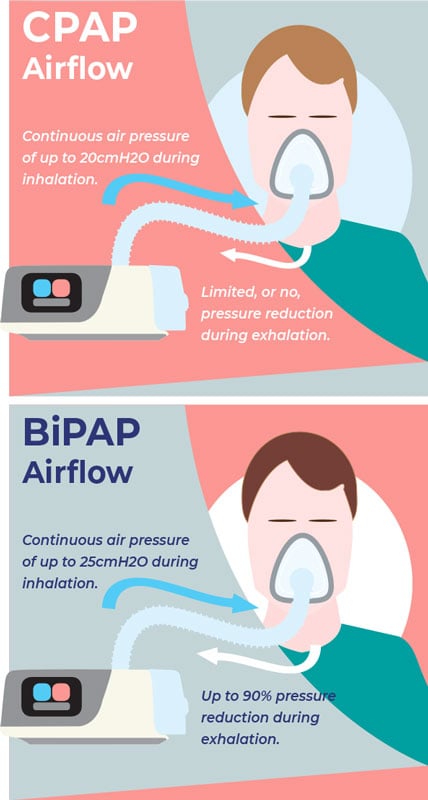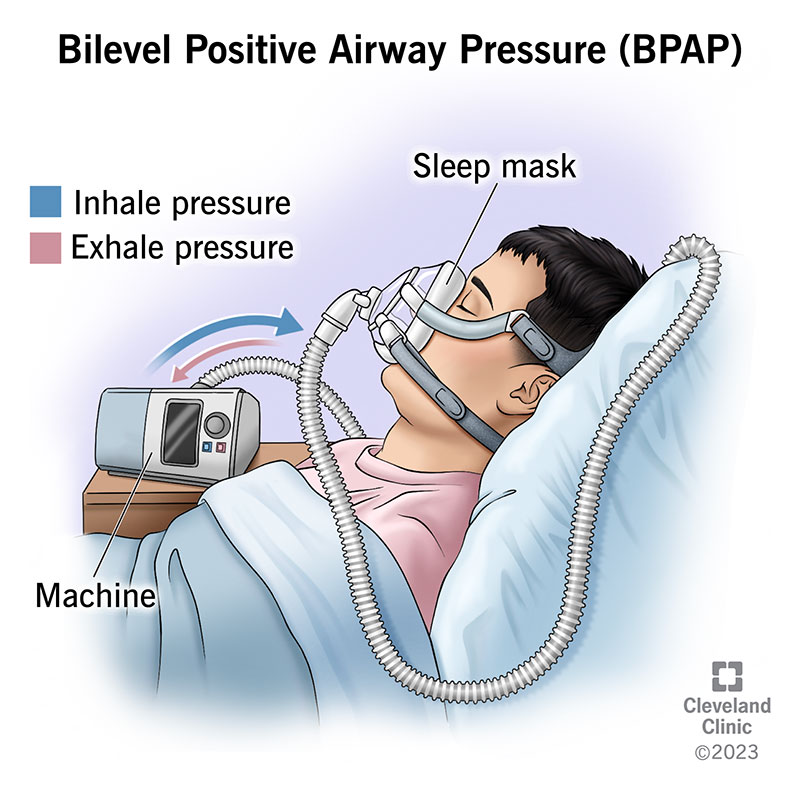Budget Friendly Alternatives for BiPAP Rental Services Near You
Budget Friendly Alternatives for BiPAP Rental Services Near You
Blog Article
Bipap vs. CPAP: Which Is the very best for Your Sleep Disorder?
When navigating the complexities of sleep problems, the selection in between BiPAP and CPAP treatment is a critical factor to consider. Each modality supplies unique benefits customized to particular problems, yet the choice pivots on individual person requirements and comfort levels. While CPAP provides a constant air flow suitable for obstructive rest apnea, BiPAP's twin pressure settings may boost convenience for those with more elaborate respiratory concerns. Recognizing these distinctions can substantially affect therapy efficiency, leaving one to ponder which option really lines up with their health and wellness requirements and way of living.
Understanding Sleep Disorders
Sleep disorders encompass a series of problems that interrupt normal sleep patterns, influencing both the quality and period of rest. These conditions can manifest in numerous types, including sleep problems, rest apnea, narcolepsy, restless leg disorder, and parasomnias. Each condition offers unique challenges, typically leading to substantial daytime exhaustion, cognitive problems, and psychological disruptions.
Insomnia is characterized by difficulty falling or remaining asleep, while sleep apnea entails duplicated disruptions in breathing during sleep, commonly leading to fragmented rest. Narcolepsy, on the other hand, is noted by excessive daytime sleepiness and unexpected sleep strikes. Agitated leg syndrome causes uncomfortable experiences in the legs, motivating an unmanageable desire to relocate them, which can also hinder the ability to drop off to sleep.
The influence of sleep conditions extends past specific health and wellness, affecting total performance, connections, and lifestyle. Understanding the particular nature of each condition is essential for efficient diagnosis and treatment. As rest health and wellness comes to be progressively recognized as an important element of overall health, addressing these conditions is vital for enhancing both rest high quality and day-to-day performance.
Just How CPAP Functions
Constant Favorable Airway Stress (CPAP) therapy is often utilized as a main treatment for obstructive sleep apnea (OSA) The system of CPAP involves the use of a device that delivers a stable stream of air through a mask put on throughout sleep. This air flow maintains favorable stress in the airway, preventing the collapse or obstruction of the throat that can occur during sleep.
When a client inhales, the CPAP machine provides a continuous flow of air, ensuring that the air passage stays open - BiPAP Rental. This not just relieves the signs and symptoms of OSA, such as snoring and interrupted rest patterns, but likewise minimizes the associated health dangers, consisting of cardio difficulties and daytime tiredness
The pressure setups on a CPAP device can be customized to satisfy private person demands, frequently identified with a rest study. Patients commonly undertake titration research studies to find the optimum pressure level for their unique condition. Regular follow-up and modifications may be necessary to make certain effectiveness and convenience. On the whole, CPAP therapy has actually been shown to dramatically improve the high quality of sleep and general health for individuals enduring from obstructive sleep apnea.
Just How BiPAP Functions
BiPAP, or Bilevel Favorable Respiratory Tract Stress, is a specialized type of non-invasive ventilation that is especially their explanation useful for clients with problems such as complex rest apnea or respiratory disorders. Unlike CPAP, which delivers a continuous stream of air at a single stress, BiPAP provides 2 distinct stress setups: a greater inspiratory pressure for inhalation and a lower expiratory stress for exhalation. This dual-pressure technique enables simpler breathing, minimizing the effort called for during exhalation.
The gadget operates via a mask fitted over the nose or mouth, attached to a device that creates air stress. When the person breathes in, the maker delivers the greater stress to help with airflow, guaranteeing that the air passage remains open. Upon exhalation, the machine instantly minimizes the stress, making it extra comfy for the individual to breathe out.

Trick Distinctions Between BiPAP and CPAP

In comparison, BiPAP (Bilevel Positive Respiratory tract Stress) uses two different pressure setups: one for breathing and a reduced one for exhalation. This double stress system permits for more comfortable breathing, particularly for patients that fight with breathing out versus a continuous pressure. BiPAP is usually suggested for patients with intricate rest apnea, chronic obstructive pulmonary condition (COPD), or those that call for extra assistance throughout rest.
Furthermore, the intricacy of BiPAP tools generally results in a higher expense and calls for much more cautious titration than CPAP. BiPAP Rental. Understanding these essential differences can help in acknowledging which gadget may be better for specific rest conditions, establishing the groundwork for informed therapy decisions
Picking the Right Therapy
The choice between BiPAP and CPAP treatment primarily hinges on the specific attributes of the sleep condition, the individual's general health, and their comfort with the device. CPAP, which supplies a continual stream of air, is commonly suggested for obstructive rest apnea (OSA)
On the other hand, BiPAP gives two degrees of pressure: one for inhalation and a lower one for exhalation. This twin pressure system is advantageous for patients with complex sleep apnea or those that experience difficulty breathing out against a constant pressure. Additionally, BiPAP is typically advised for individuals with breathing conditions, such as persistent obstructive pulmonary illness (COPD), where varying stress setups can boost comfort and conformity.
Ultimately, a comprehensive assessment by a rest specialist, including a rest research study, can aid determine which therapy straightens ideal with the patient's requirements. Variables such as comfort, simplicity of usage, and certain medical conditions need to also be taken into account to optimize treatment end results.
Final Thought
In summary, both BiPAP and CPAP serve unique objectives in the monitoring of sleep conditions. CPAP is efficient for obstructive rest apnea with constant air flow, while BiPAP supplies dual pressure setups that boost comfort for those with complicated sleep apnea or breathing problems. The choice between these therapies must be assisted by private requirements and conditions, requiring an extensive examination by a rest expert to guarantee ideal treatment outcomes and boosted top quality of rest.

Generally, CPAP therapy has been shown to substantially enhance the high quality of sleep and overall health and wellness for people enduring from obstructive sleep apnea.
BiPAP is often suggested for people with complex sleep apnea, chronic obstructive lung condition (COPD), or those that call for additional support during rest.
CPAP is reliable for obstructive rest apnea via regular airflow, while BiPAP supplies double pressure settings that improve comfort for those with complex rest apnea or respiratory system issues.
Report this page